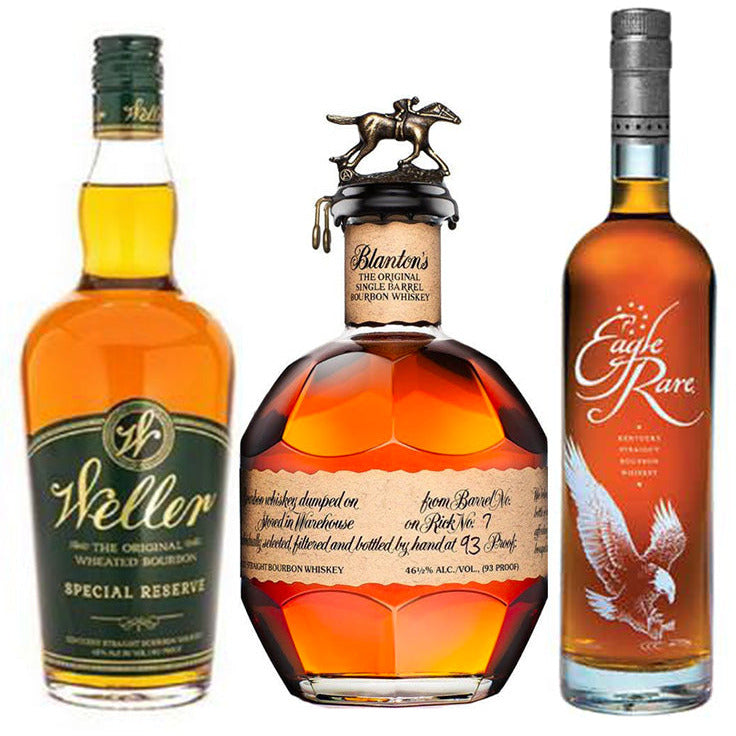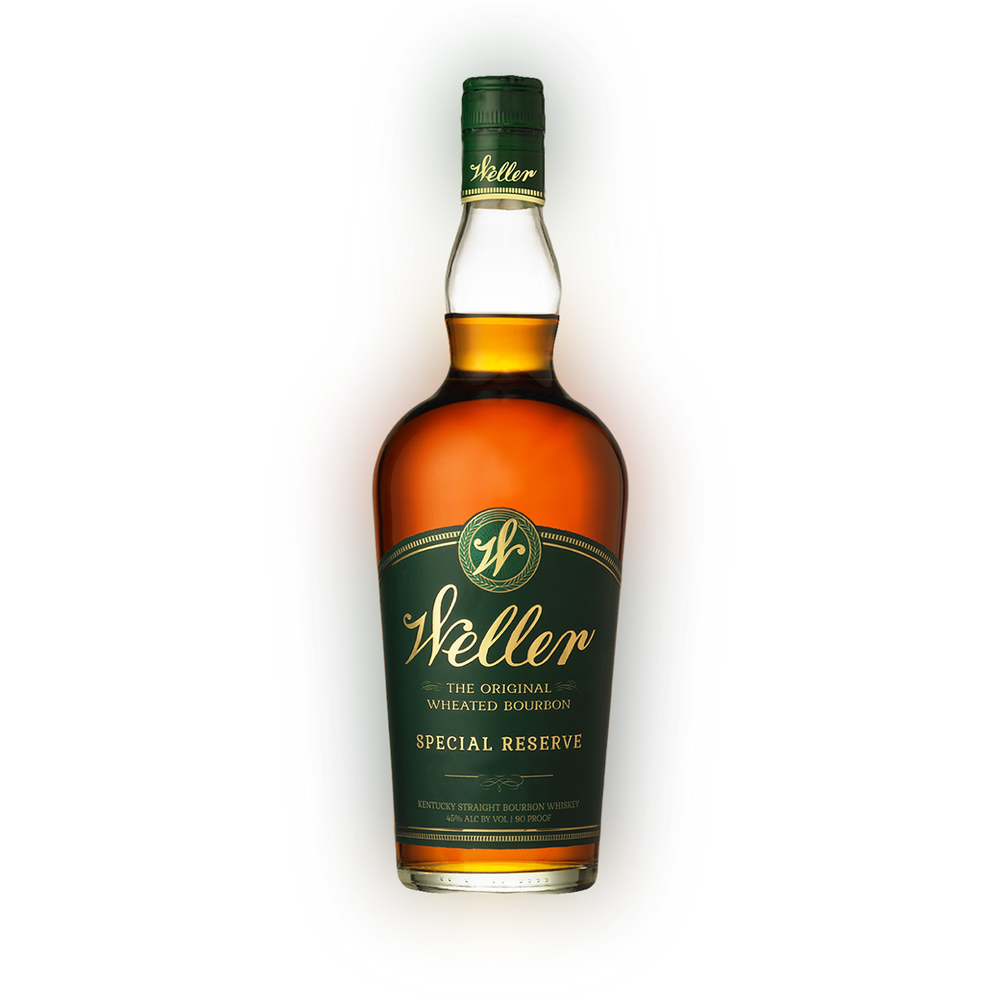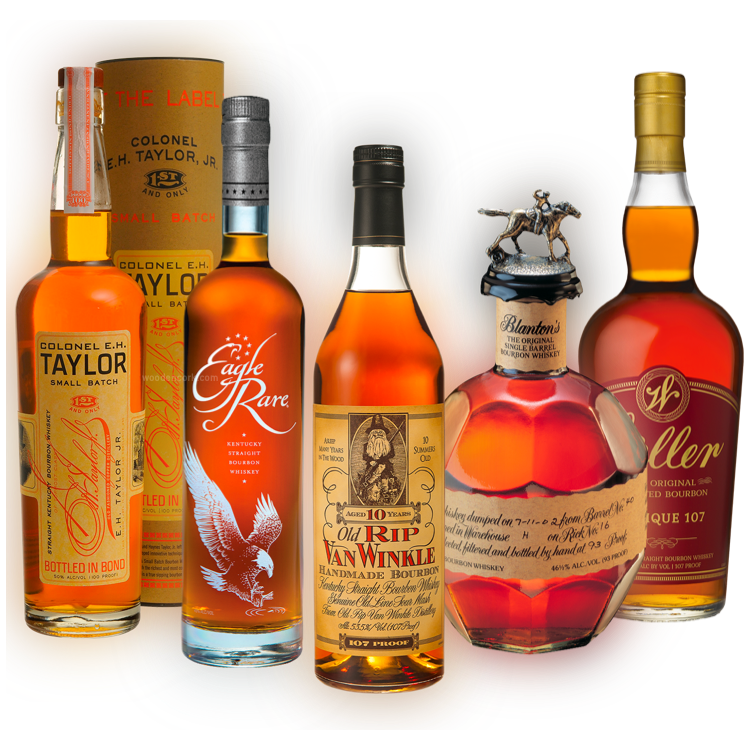Straight Talk
Call it a luxury problem.
When execs in charge of Maker’s Mark last spring announced their intent to lower the proof of their flagship bourbon, the reaction was an immediate and almost uniform ‘No!’ from the fans of the brand, who flooded wine and spirit shops to stock up on what they feared would be the last of the original, bottled at 90 proof.
Victims of their own international success and looking for a way to maintain supply, brand owner Beam Global seemed equally caught off-guard by overwhelming demand and the swift response from fans, and quickly backed down, but not until the tumult once again focused consumer and industry attention on the stunning renaissance of American whiskey.
No major brand did as well as Maker’s in terms of percentage increase last year, but most straight whiskies did very well, according to figures gathered by the Beverage Information Group. Tennessee whiskey Jack Daniel’s climbed 3.1% to 4.821 million cases, Jim Beam hit 3.153 million cases, growing by 1.4%, while Evan Williams surged 6% to 1.431 million cases. Maker’s Mark jumped 14.4% to 1.185 million, with a surge this spring after the announcement expected to continue the brand’s double-digit annual increase skein through this year. Wild Turkey also grew 2.7% to 536,000 cases. Losers included Early Times, down 1.9% to 564,000 cases, but in a sign that the flavor revolution is firmly entrenched in American whiskey, Red Stag by Jim Beam entered the top ten of straight whiskies by hitting 341,000 cases, a jump of 35.9%.
But the whiskey shortage at Maker’s Mark, joked about by some as a marketing ploy, is something other American distillers lately have referred to frequently, as the once neglected spirit is setting sales records here and abroad.
While it didn’t get as much attention, a similar warning issued from Buffalo Trace Distillery, maker of many of the sought after, high-end, small batch brands like Eagle Rare and Sazerac, who last spring notified buyers and consumers of potential shortages. ‘What were trying to do is keep people aware and know the reason why we do certain things we do, like allocations and limited releases,’ says Harlan Wheatley, master distiller at Buffalo Trace. ‘We’re trying to explain that we don’t have an endless supply and we’re trying to be smart and fair about what we ship where. Basically for all of our brands we have a limited supply, and I think everybody in the business is in that kind of shape today.’
‘Sometimes, it’s hard to get your head around the idea that we make product right now for the year 2021; we’ve already made that year and that’s it,’ Wheatley says.’
Higher-End Line Extensions
Part of what has driven sales higher has been consumer thirst for the generally more expensive line extensions and more aged expressions emerging from Kentucky. Fred Noe, master distiller at Jim Beam, notes the response is down to whiskey drinkers being less brand-loyal and more adventurous. ‘People are much more open minded today about American whiskey and want to try new things.’ He refers to the Beam small batch collection ‘ Knob Creek, Booker’s Baker’s and Basil Hayden ‘ launched in the late 1990s and how the idea of creating whiskies based on age, proof, barrel selection and warehouse location, considered unusual at the time, is now common. ‘People want to see what you’re coming up with ‘ they know your products and how they’re made. Years ago people would have turned their noses up at some of these whiskies and they now are enthusiastic.’
It’s part of the blossoming of straight whiskey, says Andrew Floor, senior marketing director – dark spirits, Campari America who oversees Wild Turkey.
‘The American Whiskey category is undergoing a renaissance, a revolution that began in the world of mixology and is fuelled by the post-global economic meltdown, along with the social and cultural movement back to hard working American values. That wave has certainly hit the retail space directly benefiting American Whiskies category, including our brands Wild Turkey and Russell’s Reserve, which is now outpacing all other categories in terms of both volume and value growth in Nielsen driven by once niche segments ‘ high proof, rye whiskey and craft brands.’
Beam’s Jacob’s Ghost is a good example of a niche segment product. Picking up on the curiosity among whiskey drinkers for raw spirit, Ghost is aged for one year, the oak adding a pale hue and a bit of maturity, making it more suitable for bartenders to use in cocktails, Noe says. ‘One year in the barrel really softens up that white dog quality, giving it a little bit of that wood quality. There’s a place for white whiskey as long as it’s palatable.’
Conversely, Beam’s Devil’s Cut is designed for people who like a lot of wood and tannin flavors in their whiskey. Using a method that ‘sweats’ the barrels, Devil’s Cut includes more flavors extracted from the aged barrels ‘ the two expressions ‘ Jacob’s Ghost and Devil’s Cut – are examples of whiskey makers trying to create expressions for every drinker, Noe says.
Even Jack Daniel’s, a distiller not known for experimentation, joined the white whiskey parade this year with an unaged rye. Master distiller Jeff Arnett explains: ‘There’s a market for white whiskey and people are very curious about them. Usually the only reason people sell unaged is because the aged isn’t ready yet. We don’t need to do that but we had already decided to make a rye, and because so much white whiskey has been coming out and people were interested in it, offering the rye this way made sense.’
Arnett says the interest in white whiskey in the past few years has been good for the entire whiskey category, but in the case of Jack Daniel’s, this will be a one-off, a teaser for the mature product which will be following soon. However, while there are no immediate plans for new whiskies with the Jack Daniel’s label beyond the fully aged rye, Arnett says using different grain bills or finishes, and experimenting with barrels ‘speaks more to our historic process and intrigues us the most.’
The Flavor Train
Jack Daniel’s has already done exceptionally well with its Tennessee Honey flavor extension, as have other brands that have jumped on the flavored whiskey train. ‘Jack Daniel’s is very well known brand and when people are kind of into the flavor of the month, brands like ours can look a little boring but Tennessee Honey generated a lot of excitement around Jack Daniel’s.’ In fact, it’s been so successful that the company hasn’t been able to fulfill many international requests for expansion. Yet.
Tennessee Honey has successfully gathered in more women and ethnic consumers to the Jack Daniel’s brand. ‘We were clearly trying to use it to interest consumers who weren’t already whiskey consumers, hoping to get some converts for sure. Jack Daniel’s has always had a bit more female followers than most whiskies but we’ve found a very high retention rate from new consumers when they try it.’
Flavor expressions are now rife throughout American whiskies. For example, Brown-Forman’s Early Times introduced two flavored iterations in the past year – Early Times Fire Eater, a hot cinnamon flavored spirit sold in 19 markets, and Early Times Blind Archer, a spiced apple flavored spirit, sold in nine markets.
Building off the success of Beam’s Red Stag and Red Stag Black Cherry, the company introduced Red Stag Hardcore Cider, the fourth flavor in the franchise. Even at the more sophisticated whiskey end, companies including Beam are considering the value of added flavors. Earlier this year, Beam released two new expressions ‘ Jim Beam Signature Craft, a small batch 86 proof spirit aged 12 years, and a 12 year old Bourbon finished with some Spanish brandy. While many experimental expressions have been released made with various used barrel finishes, adding another spirit is fairly unusual. Current Beam plans call for an annual release with a different finish or type of expression.
On top of that, Beam’s Knob Creek Bourbon has offered a new Smoked Maple iteration, rolled out regionally in September and expected to reach national distribution before the holiday season, backed by both an on- and off-premise push, targeting cocktail, after-dinner and dessert occasions.
These innovations are mostly meant to bring new drinkers into the fold; meanwhile, creating longer aged or otherwise new expressions are what have kept current whiskey drinkers intrigued.
By The Barrel
Among those programs are the retailer-focused ‘by the barrel’ ventures. At the recent ‘Tales of the Cocktail’ conference in New Orleans, Heaven Hill organized a seminar on barrel programs in which six on-premise accounts served cocktails made with their own Evan Williams barrels. The company currently offers four brands – Evan Williams Single Barrel, Elijah Craig Small Batch 12 Year Old, Henry McKenna Bottled in Bond and Bernheim wheat whiskey ‘ in the format. ‘They’ve become amazingly popular and have become great tools for us, and it’s a pretty cool brand building tool for us as well,’ says company spokesman Larry Kass. ‘There are a lot of accounts that are putting a good deal of effort into full barrel sales, not just retail but also on premise accounts.’
The Knob Creek ‘by the barrel’ program has found some big fans ‘ Noe says a restaurant in Minneapolis takes a barrel every month ‘ and now even new whiskies are getting the barrel treatment. Until recently, the only Brown-Forman whiskey available in single barrel was Jack Daniel’s, but the line extension of Woodford Reserve bourbon introduced last year ‘ Woodford Reserve Double Oak ‘ is the newest.
‘In the brief time it was out, we were inundated from off trade retail for a ‘by the barrel’ program,’’ says Brown-Forman’s master distiller Chris Morris. ‘So we just introduced a Woodford Reserve Double Oak by the barrel, single barrel in its own package.’ In July, the New Hampshire State Liquor Control Board bought their first barrel. ‘That shows how wide-spread the appreciation of this type of whiskey program is, when New Hampshire, which you would not call a bourbon market by the normal stretch of the term, is buying single barrels,’ Morris says.
(Brown-Forman has expanded their ‘by the barrel’ initiatives to include Old Forster, delivered at a unique proof and package.)
Morris points out that the ‘by the barrel’ programs often allow customers to visit the distilleries, sample barrels and, presumably, establish bonds with the maker. ‘We get very involved in the tasting process with the customer and hope and feel that we are building a friendship for life as they get to know the product through the distillery that crafted it.’
Day-To-Day Sales
Despite all the activity around line extensions and innovation, it’s the day-to-day brands that do the heavy lifting, and to speed growth of their growing Evan Williams brand, Heaven Hill is aiming more firepower behind the brand.
‘There’s a lot of things we’ve done on Evan Williams ‘ we’ve gotten pretty aggressive with our promotion, advertising and marketing. We have been really performing very well year on year, outpacing the category even though were a mid-tier player,’ says Kass.
Brand execs have been researching their consumers and prospects at a time when ‘keeping people in your franchise takes lots of work, there is lots of competition pulling people from one brand to the next,’ he says. With many consumers trading up at least occasionally to small batch or single barrel extensions, the brand is poised with four expressions ‘ Evan Williams, Evan Williams 1783, Evan Williams Single Barrel Bottled in Bond and the annual vintage release – a progression of offerings at a different price points and product attributes. Broadcast and digital and sponsorships are growing, especially in bass fishing and now bull riding, with more social media activity and the tag line ‘Seriously good bourbon.’ Even though Evan Williams is second largest selling bourbon in the country, it’s considered something people treat as an insider’s bourbon, and we’re letting people in on the secret.’
Heaven Hill is spending more than $25 million this year to expand facilities and build a downtown Louisville visitor’s center. And they’re working on the image of another brand with new packaging for Henry McKenna Bourbon and Henry McKenna Bottled-In-Bond Single Barrel Bourbon. The bottles have been given a ‘bolder and more modern’ look, with labels in a deep brown color and subtle leather-like patterns behind them, as well as cream and tan accents and type. The brand logo itself has been updated with a more contemporary typeface and graphics.
And at the ultra-premium tier, they’ve released a new limited edition Elijah Craig 21-Year-Old Single Barrel Kentucky Straight Bourbon Whiskey to selected markets across the country on a one-time basis. The new bottling follows up on the success of the sold-out Elijah Craig 20-Year-Old Single Barrel.
Among the newer whiskey brands issuing from the major distillers, Larceny made quite a splash two years ago. A wheated bourbon built on the Old Fitzgerald style, the brand, which launched in only about a dozen markets, sold so well that the company won’t be able to expand distribution for a couple of years, say Kass. ‘There’s a big group at the top end of the consumer tier who whop understand enough about bourbon, how it’s made and the differences between them to recognize a wheated bourbon. It’s a leverageable marketing point now.’
Also leveragebale are more experimental expressions ‘ Wild Turkey has just released Forgiven, a limited edition blend of small batch bourbon and high-proof rye whiskey. The 91-proof offering is said to have been created when a distillery crew member mistakenly combined the two liquids, 78% six-year-old bourbon and 22% four -year-old rye, currently rolling out in limited release. Flush with success, most distillers are preparing a steady stream of new expressions; Buffalo Trace just offered Stagg Jr. Bourbon, an uncut and unfiltered whiskey building on the limited release George T. Stagg. The first batch of Stagg Jr. is comprised of barrels aged for eight and nine years, bottled at 67.2% ABV. Like George T. Stagg, Stagg Jr. will be limited, but several batches each year are planned. ‘Stagg Jr. is one we’re pretty proud about because it’s an extension of the Stagg antique collection. It’s a very similar story to the Sazerac brand ‘ we keep getting great feed back and it wins awards but we hate to see it put into a cocktail. Stag Jr. is the same bourbon but a little bit younger, uncut, unfiltered, barrel strength, full flavored and full bodied.’
Buffalo Trace continues the experiments that typify the new atmosphere in Kentucky ‘ recently issuing the tenth release in the Single Oak Project, this batch focusing on different proofs when the new made spirit enters barrels. Most significant perhaps is Buffalo Trace Distillery is Warehouse X, the first new building at the distillery in more than 60 years! The structure will have a capacity of only about 150 barrels, but will have four independently operating chambers that will allow specific variables to be tested to determine their effect on aging barrels. The first four variables Buffalo Trace plans to experiment with are natural light, temperature, airflow, and humidity.
It’s that sort of brain storming that has helped drive the straight whiskey growth pattern. As Floor of Wild Turkey says, ‘The sky is literally the limit for American Whiskies’¦I think the bourbon renaissance is still in its early stages and as consumer understanding of and appreciation for the diverse world of American Whiskey grows, so will the category.’
The post Straight Talk first appeared on Beverage Dynamics.







